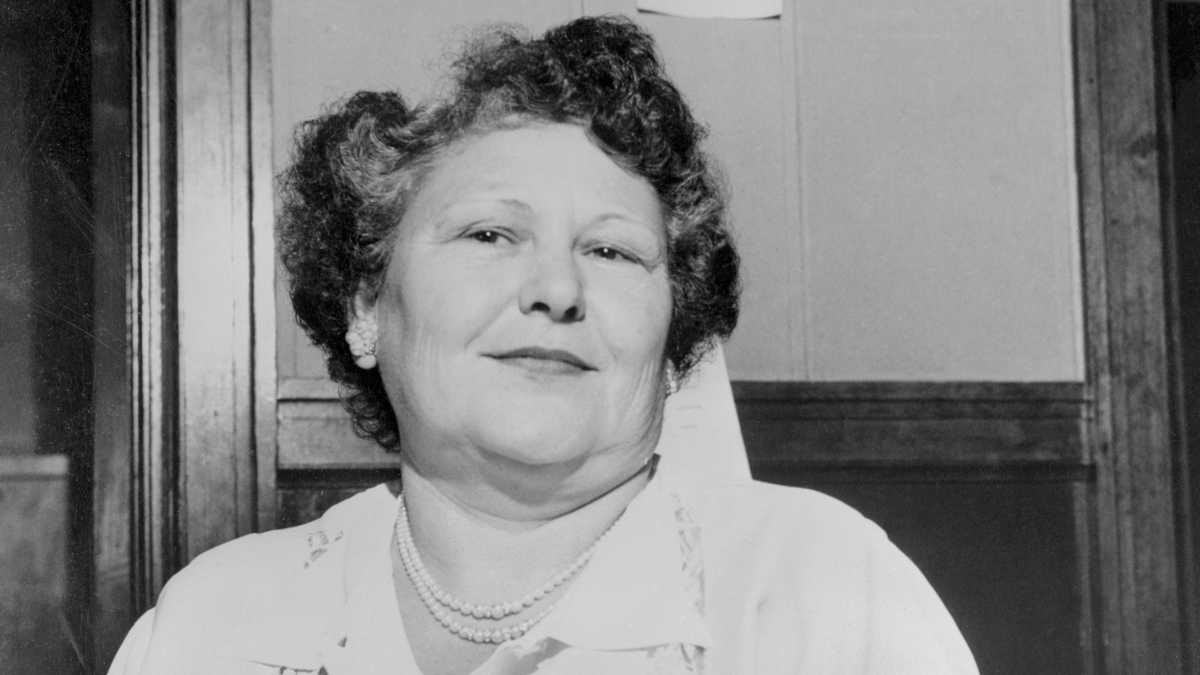
Who was Nannie Doss, and why did she become known as the "Giggling Granny"? Nannie Doss, born Nancy Hazel on November 4, 1905, in Blue Mountain, Alabama, was an American serial killer responsible for the deaths of eleven people between the 1920s and 1954. Her cheerful demeanor and unsettling giggle earned her the nickname "Giggling Granny." Despite her innocent appearance, Doss's life was marked by a series of tragic events, including a severe childhood head injury and abusive relationships. She used arsenic-laced food to kill her victims, which included four husbands, two children, her mother, two sisters, a grandson, and a nephew. Her case remains one of the most disturbing in American true crime history.
Key Takeaways:
- Nannie Doss, also known as "The Giggling Granny," led a troubled life marked by trauma and restrictive upbringing, which ultimately led to a shocking murder spree targeting her loved ones.
- Nannie's case offers insights into the complexities of human behavior, the impact of societal factors, and the lasting influence of her crimes on true crime history and popular culture.
Early Life and Background
Nannie Doss, born Nancy Hazel, had a tumultuous start to life. Her early years were marked by hardship and trauma, which would later shape her notorious path.
- Birth and Early Life: Nannie Doss was born on November 4, 1905, in Blue Mountain, Alabama, now part of Anniston.
- Family Background: Her parents were Louisa "Lou" (née Holder) and James F. Hazel. Nannie had one brother and three sisters.
- Childhood Trauma: At age seven, Nannie suffered a severe head injury while riding a train, leading to years of headaches, blackouts, and depression.
- Education: Her education was erratic due to her father's insistence on farm work over school, impacting her academic performance.
- Favorite Hobbies: As a child, Nannie loved reading her mother's romance magazines, which fueled her dreams of a romantic future.
- Lonely Hearts Column: She was particularly fascinated by the lonely hearts column in these magazines, a theme that would recur in her life.
Restrictive Upbringing and Early Marriages
Nannie's early life was marked by strict parental control and tumultuous relationships, setting the stage for her later actions.
- Restrictive Upbringing: The Hazle sisters' teenage years were restricted by their father, who forbade makeup, attractive clothing, and social events.
- First Marriage: At 16, Nannie married Charley Braggs, whom she met at the Linen Thread factory. They married after just four months of dating.
- Marriage Dynamics: Nannie's first marriage was stormy. Charley described her as "high-tempered and mean".
- Children and Divorce: Nannie and Charley had four children, but the marriage fell apart after eight years. Three of their children did not survive to adulthood.
- Second Marriage: Nannie's second marriage was to George Frazer, although some sources mention Charles Braggs as her first husband. The exact identity of her first husband remains unclear.
The Murder Spree Begins
Nannie Doss's descent into murder began with her second husband, marking the start of a deadly pattern.
- Murder Spree Begins: Nannie's murder spree began with her second husband, George Frazer, whom she poisoned with arsenic.
- Victim List: Over the years, Nannie killed four husbands, two children, her two sisters, her mother, a grandson, and a nephew.
- Poisoning Method: She used arsenic-laced rat poison, often feeding it to her victims through food or drinks.
- Psychological Motivation: Her motivation was not financial gain but a relentless search for the perfect romantic partner.
Confession and Conviction
After years of evading justice, Nannie Doss's crimes finally caught up with her, leading to her confession and conviction.
- Confession and Conviction: In October 1954, after her fifth husband died, Nannie confessed to the murders. She was prosecuted by J. Howard Edmondson.
- Trial and Sentencing: The state of Oklahoma centered its case on Samuel Doss. Nannie was sentenced to life imprisonment without parole.
- Prison Life: Nannie spent the remainder of her life in prison, maintaining a cheerful demeanor, earning her the nickname "The Giggling Granny".
- Death in Prison: Nannie Doss died on June 2, 1965, from leukemia while serving her life sentence at the Oklahoma State Penitentiary.
Public Perception and Media Nicknames
Nannie Doss's case captivated the public and media, who struggled to reconcile her cheerful facade with her gruesome crimes.
- Public Perception: The public saw Nannie as both a sweet, innocent woman and a cold-blooded killer.
- Media Nicknames: She was dubbed "The Giggling Granny," "Arsenic Annie," "The Jolly Black Widow," and "Lady Blue Beard" by the media.
Psychological and Cultural Impact
Nannie Doss's story offers insights into the psychological complexities of human behavior and the societal factors that contributed to her actions.
- Romance Magazine Influence: Nannie's love for romance magazines profoundly affected her psyche, fueling her search for true love.
- Abusive Relationships: Her experiences with abusive relationships influenced her behavior, often targeting men who were abusive or controlling.
- Victim Selection: Nannie's victims were often those closest to her, suggesting deep-seated psychological issues related to family dynamics and romantic expectations.
- Lack of Empathy: Despite her cheerful appearance, Nannie showed a remarkable lack of empathy for her victims.
- Psychological Analysis: Criminologists suggest she may have had a personality disorder or other psychological issues, though a definitive diagnosis was never made.
Legacy and Historical Significance
Nannie Doss's case remains a significant and cautionary tale in true crime history, highlighting the darker aspects of human nature.
- Cultural Impact: Her case has been extensively covered in books, documentaries, and podcasts, continuing to fascinate audiences.
- Historical Context: Nannie's crimes took place during a time when women's roles in society were limited, adding another layer to her story.
- Legal Implications: The case raises questions about justice and sentencing, as she was never charged for most of her murders.
- Public Reaction: The public reaction was mixed, with some seeing her as a monster and others feeling sympathy for her troubled past.
- Media Portrayal: The media portrayal of Nannie has been both sensationalized and sympathetic, making for compelling headlines.
- Influence on True Crime: Her case has influenced the true crime genre, inspiring numerous works and serving as a reminder of the complexities of human behavior.
- Legacy: Despite her heinous crimes, Nannie remains a fascinating figure in true crime history.
- Comparison to Other Serial Killers: Her case has been compared to other serial killers, highlighting psychological complexity and societal factors.
- Historical Significance: Nannie's case is significant for its brutality and historical context, shedding light on societal norms and expectations of the time.
The Legacy of Nannie Doss
Nannie Doss, known as the "Giggling Granny," left a chilling mark on true crime history. Her life, filled with early trauma, abusive relationships, and a twisted search for love, led to the deaths of eleven people. Despite her cheerful demeanor, she showed a shocking lack of empathy, poisoning family members and husbands with arsenic. Her fascination with romance magazines and the lonely hearts column fueled her deadly actions.
Doss's case highlights the darker aspects of human nature and the devastating consequences of unfulfilled desires. She spent her final years in prison, maintaining her unsettling cheerfulness until her death in 1965. Nannie Doss remains a haunting figure, reminding us of the complexities of the human psyche and the societal pressures that can drive someone to commit such horrific acts. Her story continues to captivate and horrify, a grim testament to the extremes of human behavior.
Frequently Asked Questions
Was this page helpful?
Our commitment to delivering trustworthy and engaging content is at the heart of what we do. Each fact on our site is contributed by real users like you, bringing a wealth of diverse insights and information. To ensure the highest standards of accuracy and reliability, our dedicated editors meticulously review each submission. This process guarantees that the facts we share are not only fascinating but also credible. Trust in our commitment to quality and authenticity as you explore and learn with us.


